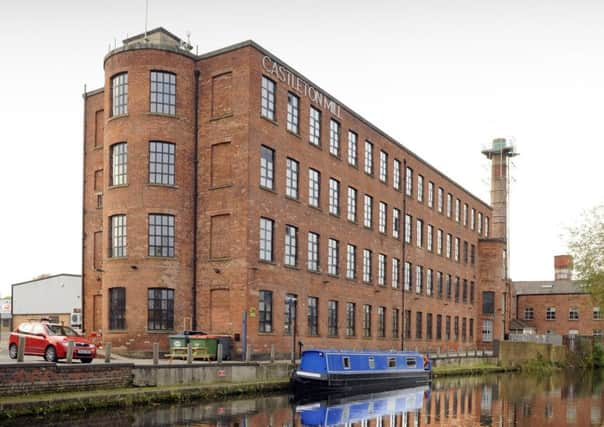Potential lies in our '˜disappearing' historic Yorkshire textile mills, says heritage body


The heritage champion is calling for industrial mill buildings across the north to be salvaged for future generations as homes, workplaces and cultural spaces.
It has released new research today which it says shows the public is against demolition of these “distinctive and character-filled” buildings that once defined the landscape of northern England.
Advertisement
Hide AdAdvertisement
Hide AdHeritage England said hundreds of historic buildings stand empty and neglected, and highlighted Bradford, where more than 100 historic mills had been involved in fires since 2010.
But there are success stories that show the potential of these “wonderful” buildings, it said. It has highlighted Grade II-listed Castleton Mills, which sits on the banks of the Leeds-Liverpool canal in central Leeds, which has undergone a £1.5m regeneration programme since being bought by businessman Dirk Mischendahl in 2013.
Built in 1836, the former flax mill had become office space in the 1990s, but was almost empty and in a state of disrepair when it was taken on by Mr Mischendahl, who had previously been involved in the transformation of the former Tetley Brewery in Leeds.
After an extensive restoration project, the mill was repurposed as a collection of work spaces and studios for creative industries, with an array of original features retained and restored, included vaulted ceilings, original wooden beams, large windows and Yorkshire stone floors.
Advertisement
Hide AdAdvertisement
Hide AdBuilding and community manager at Castleton Mills, Sue Jennings said: “The owners are passionate about restoring the mill and retaining as many original features as possible - including the distinctive chimney.
“It needed a huge amount of work and around £70,000 alone has been recently invested in restoring it. The chimney doesn’t have any commercial value, but it is an iconic sight along the canal, so it was important to us to retain it for future generations.
“We still have two annexes left to convert and we’re always looking into the history of the building, and spotting lovely and interesting things from throughout its history.”
While its latest report focuses on the North West, where almost half of mills across Greater Manchester have been lost since the 1980s and 66 per cent have gone in Salford, an in-depth study of mills in Yorkshire and the Humber by the body last year showed that more than 1,300 mills across Leeds, Bradford, Calderdale and Kirklees stood empty or under-used. Then, Historic England said the region’s former textile mills could accommodate 27,000 homes or 150,000 jobs - with a typical vacant mill having the potential to create £4.7m a year if used for employment.
Advertisement
Hide AdAdvertisement
Hide AdThe latest report said the North West’s vacant mill spaces could go a long way to solving the region’s housing crisis, with an estimated 1.9m square metres of vacant floor space in textile mills across Greater Manchester and Lancashire - equivalent to 25,000 new homes.
AROUND 90 per cent of people surveyed by Historic England believe mills are an important part of the nation’s heritage, story and character.
And 85 per cent said they do not want to see them demolished or replaced. Eight out of ten in the north say former mills should be considered for housing, offices and public amenities before constructing new buildings.
Historic England want public support to galvanise owners and developers to see the potential historic mills can offer.
Advertisement
Hide AdAdvertisement
Hide AdHistoric England’s planning director in the North West, Catherine Dewar said mills had a “profound impact on the physical and cultural landscape” of the north.
“Mills have so much to offer in terms of space, character and identity,” she added.
“By shining a light on successful regeneration projects, we hope to inspire others to recognise the potential of our former industrial buildings and start a conversation about their future.”